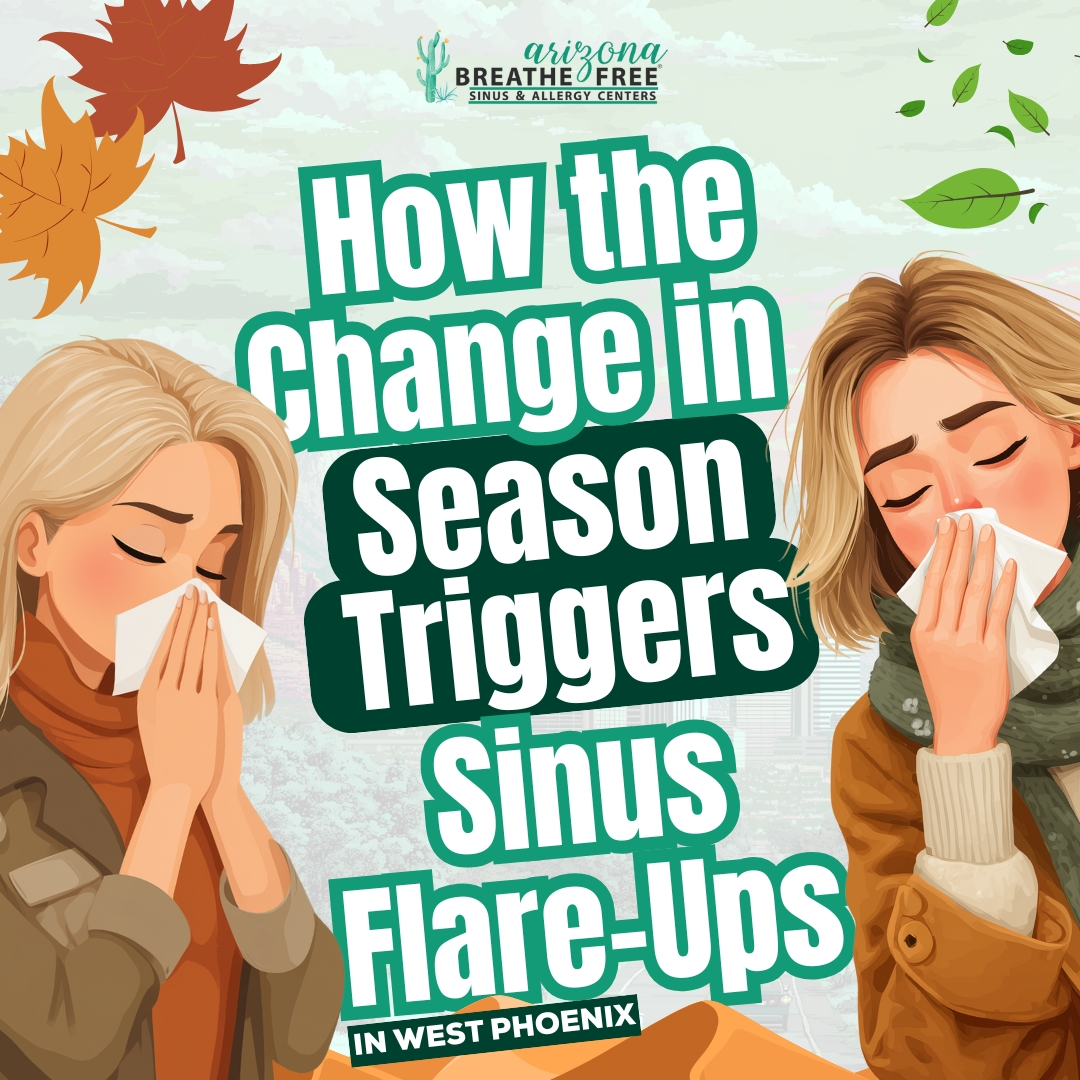How the Change in Seasons Triggers Sinus Flare-Ups in West Phoenix
Seasonal changes don’t just bring cooler temperatures, drier air, and fall colors — for many people, they can also contribute to increased sinus symptoms like congestion, sneezing, and pressure.
As the weather and air conditions shift, it’s helpful to understand how these changes may affect sinus health and what you can do to reduce discomfort and support healthy sinus function.

How Seasonal Changes Impact Sinus Health
Several environmental and atmospheric changes during seasonal transitions can contribute to sinus-related issues:
⭕ Colder Temperatures
As the weather cools in the fall and winter months, sinus passages may constrict in response to colder air. This can lead to inflammation that interferes with normal mucus drainage. In some cases, this swelling and mucus buildup may increase susceptibility to infections caused by germs or viruses.
⭕ Drier Air
Cooler weather often brings drier air. When nasal passages lack sufficient moisture, they may become irritated and inflamed, increasing the risk of congestion and discomfort.
⭕ Shifts in Barometric Pressure
Atmospheric pressure changes that accompany seasonal shifts can sometimes trigger sinus pressure and headaches in sensitive individuals.
⭕ Increase in Seasonal Allergens
In Arizona’s fall season, allergens like ragweed, Russian thistle, careless weed, and grass pollen can become more prevalent. For individuals with sensitivities, this can worsen allergy-related sinus inflammation and symptoms.
How to Support Your Sinus Health During Seasonal Changes
✅ Stay Hydrated: Drink plenty of water throughout the day to help maintain moisture in the nasal passages and keep mucus thin and easier to clear.
✅ Manage Allergies: Limit exposure to known allergens, keep your home environment clean, and talk to your healthcare provider about appropriate treatments, including allergy medications or immunotherapy.
✅ Use Nasal Irrigation: Saline nasal rinses can help flush out allergens and mucus while soothing irritated tissues.
✅ Inhale Steam: Breathing steam from a warm shower or bowl of water may provide temporary moisture and relief for dry nasal passages.
✅ Use a Humidifier: Adding moisture to indoor air can help prevent nasal dryness, especially in heated environments during colder months.
✅ Avoid Sudden Temperature Changes: Sudden shifts in temperature can trigger inflammation. Dress in layers and take steps to avoid abrupt exposure to cold air.
✅ Consider Over-the-Counter Remedies: Non-prescription antihistamines, decongestants, saline sprays, and pain relievers may help manage mild sinus symptoms. Always follow label directions and consult a provider if symptoms persist.
Arizona Breathe Free – Sinus Care for West Phoenix
Sinus symptoms often become more noticeable during seasonal changes, especially for those with allergies or sensitivity to environmental triggers. At Arizona Breathe Free, we are committed to helping individuals throughout Maricopa County, West Phoenix, and surrounding communities understand their sinus health and explore treatment options tailored to their needs.
Schedule a consultation with our team to take the first step toward long-term sinus relief and management.

.png)